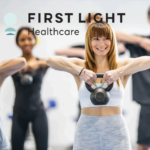STROKE INFORMATION – TYPES AND WHAT TO DO
Stroke is one of Australia’s biggest killers accounting for more deaths of women than breast cancer and more deaths of men than prostate cancer.
A stroke occurs once every nine minutes, but 80% of strokes are preventable.
Raising awareness and educating friends and family about stroke is the key to reducing these figures. Here we look at risk factors, preventative measures, warning signs and what to do if someone you know is having a stroke
HOW DO I KNOW IF SOMEONE IS HAVING A STROKE?
The Stroke Foundation recommends asking the following simple questions represented by the letters F.A.S.T. to recognise when a stroke is happening to you or someone else.
Think FAST act FAST.
Face. Has their face dropped?
Arms. Can they lift both arms?
Speech. Is their speech slurred?
Time. Its critical. Call 000 immediately.
If you or your loved one experiences any of these symptoms, it could be indicative of a stroke. Acting quickly is essential to minimising the possibility of stroke related brain damage.
There are other symptoms of stroke, which can include; feeling dizzy, experiencing difficulty swallowing, experiencing a loss of vision (blurring or decreased sight in one or both eyes) and severe headaches that differ from any usual pattern you have experienced.
WHAT SHOULD I DO WHILE I WAIT FOR THE AMBULANCE?
If the person is conscious, lay them down on their side with head slightly raised and supported
-Do not give them anything to eat or drink
-Loosen restrictive clothing
-Monitor breathing and pulse and perform CPR if required
WHAT ARE THE DIFFERENT TYPES OF STROKE?
Haemorrhagic; this is when the the artery inside or on the surface of the brain bursts and bleeds into the brain.
Ischaemic; blockage in the artery caused by a blood clot meaning loss of blood flow to the brain
Transient ischaemic; temporary blockage causing the same symptoms but only for a short time.
Risk categories; More than 80% of strokes can be prevented by being aware of stroke risk factors, taking charge of your own health and living a healthy lifestyle.
High blood pressure, type 2 diabetes, high cholesterol and atrial fibrillation (irregular pulse) are the most common factors that will increase your risk of having a stroke.
Being overweight, smoking, drinking to excess, diets high in salt and a lack of exercise will all contribute to the likelihood of a stroke. Males are particularly at risk because in general they have higher blood pressure than females.

WHAT CAN I DO TO REDUCE MY RISK OF STROKE?
Lifestyle changes
Smoking is the biggest factor contributing to your stroke risk. If you smoke cigarettes, you need to quit. We know that is easier said than done, so visit one of our GPs who can help you in a variety of ways and offer ongoing support.
Drink less alcohol.
Eat a healthy diet.
Do more exercise and watch your weight.
Take prescribed medication
If you have a medical condition that is increasing your risk of stroke, make sure you take the medication you’re prescribed. If you have any questions about your medication, go back to your doctor or pharmacist and ask. Tell them if you are worried about side effects, as there will usually be an alternative that you can take. Never stop taking your medication without talking to your doctor first.
Regular check-ups
As we age, our arteries become harder and narrower, making them more likely to become blocked. However, some medical conditions like high blood pressure, high cholesterol and diabetes can speed up the process and increase your risk of having a stroke. Regular check-ups with your GP, especially as you get older, will pick up on any problems.
Your GP can test you for some of the following conditions and give you advice on how to control them:
high blood pressure
diabetes
high cholesterol
atrial fibrillation
other problems like heart valve disease and heart attacks.
CAN I REDUCE MY RISK IF I’VE ALREADY HAD A STROKE?
Although your risk of having a stroke is higher if you have already had a stroke or a transient ischaemic attack (TIA), there are still positive things you can do to reduce your risk.
take any medication that has been prescribed
have regular health check-ups
talk to your doctor about any lifestyle changes you need to make




